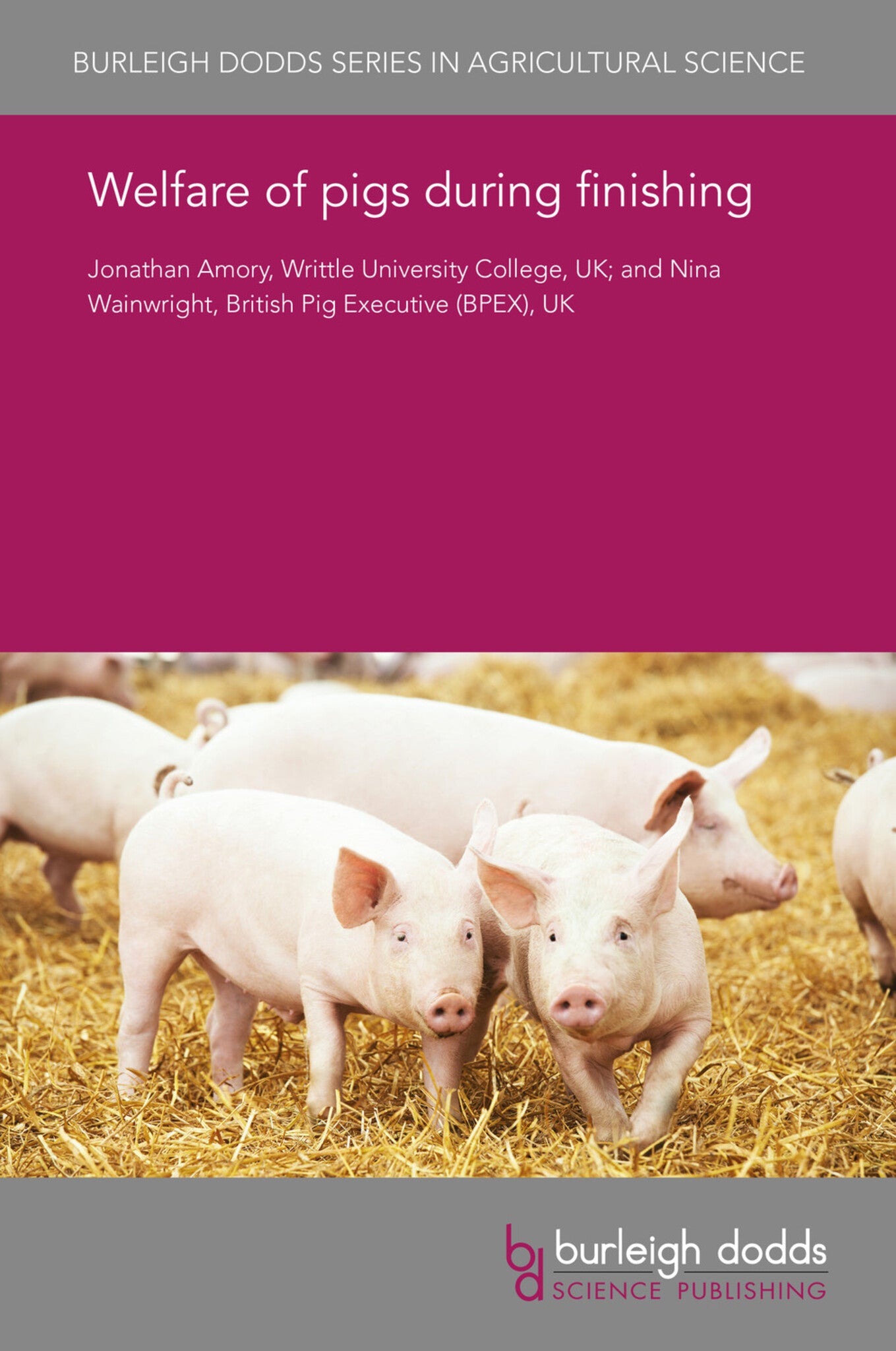We're sorry. An error has occurred
Please cancel or retry.
Welfare of pigs during finishing
Regular price
£25.00
Sale price
£25.00
Regular price
£25.00
Unit price
/
per
Sale
Sold out
Re-stocking soon
Finisher pigs, those of a post-weaning age kept for slaughter, make up the majority of the world pig population of approximately 1 billion. The intensive production system for post-weaned pigs is c...
Read More

Some error occured while loading the Quick View. Please close the Quick View and try reloading the page.
Couldn't load pickup availability
- Format:
-
12 March 2018

Finisher pigs, those of a post-weaning age kept for slaughter, make up the majority of the world pig population of approximately 1 billion. The intensive production system for post-weaned pigs is characterised by higher animal density, larger farms, use of concentrated foods and control of the production environment, particularly temperature, humidity and lighting. This chapter explores the relationship between nutrition management and the welfare of finishing pigs and the links between physical and social environment and welfare of finisher pigs. The chapter addresses the importance of environmental enrichment and ways to avoid tail-biting behaviour. Finally, the chapter describes methods of practical welfare assessment of finisher pigs and looks ahead to future research trends in this area.

Price: £25.00
Publisher: Burleigh Dodds Science Publishing
Imprint: Burleigh Dodds Science Publishing
Series: Burleigh Dodds Series in Agricultural Science
Publication Date:
12 March 2018
ISBN: 9781838795221
Format: eBook
BISACs:
TECHNOLOGY & ENGINEERING / Agriculture / Animal Husbandry, Animal husbandry, TECHNOLOGY & ENGINEERING / Agriculture / Sustainable Agriculture, Sustainable agriculture

- 1 Introduction
- 2 Nutrition management and welfare of finishing pigs
- 3 Physical and social environment and welfare of finishing pigs
- 4 Environmental enrichment and tail-biting
- 5 Practical welfare assessment of finisher pigs
- 6 Future trends
- 7 Conclusion
- 8 Where to look for further information
- 9 References



